The Arcade Cabinet Model
How fighting game publishers charge you $70 and expect you to bring quarters.
Fighting games, my beloved. My earliest gaming memories involve fighting games - when we got a PS2 as kids, my brother and I got Tekken 4 with our system and my love for fighting games hasn’t stopped since. There is immense satisfaction in picking up a character for the first time, slapping around the controller until you start picking up combos, and then seeing your own progress as you realize you are learning a character, and maybe eventually even mastering them. This core gameplay loop is only sweetened by the friendly, or sometimes overly-heated, matches with friends and family. To this day I still pop into fighting games with friends in either Tekken 8, Street Fighter 6 or Guilty Gear Strive for some laughs and screams while we pound on our controllers next to each other on the couch or miles away online.
It is easy to see why the fighting game genre exploded in arcades in the 90’s 00’s. I never got to experience this myself, as there wasn’t an active arcade scene where I grew up, but what better could there be to do on a Friday night as a teenager or young adult than pop into an arcade with your friends with a pocket full of quarters and have yourself a tournament for fun? Better yet, what about buying the game that cabinet is based on outright for your Sony PlayStation 2 and mashing it out with your fellow gamers, to then feel like increasing the stakes and gambling the college fund your parents hid in their closet that they saved years and years for, only to lose it to the neighborhood kids, which forces you to come up with an elaborate tale for your parents on why the money disappeared?
In America, there aren’t nearly as many arcade scenes around as there are over in Japan, but you can still purchase the game for $70 on your platform of choice and play with the gang across the world. $70 is a high cost of entry, but its a one-and-done fee at least. Right?….. RIGHT?
Alright, lets talk about things that Piss Finn Off™️with today’s segment - Greedy game publishers in the modern gaming era, highlighting the concept of double-dipping.

Possibly the most frustrating trend in gaming right now are battle passes, season passes, and microtransactions. Continued payment in the arcade makes sense. You load up your arcade card rather than coming with a pocket full of quarters, but the premise is the same, you pay-per-play on a game of your choice, and your friend can play across from you. You guys virtually beat each up to the ends of the earth until you are out of money on your card, and then you carry on with the night. You didn’t have an upfront cost that was marketed like a single time fee, and you can come and go as you please. In the home, it’s meant to be different - You pay for the video game, since you already paid for the hardware to play it on, as well as your online fee depending on your platform of choice, and then that’s it, you get to play as much as you want!
You bought your version of the arcade cabinet, that is to say your console or PC and gamepad, and then you paid for a copy of the software. If you are purchasing a game from a long running franchise like Tekken or Street Fighter, there is a chance you have characters you main who have been present for many games, and there are a few new characters for you to learn in the newest title. However, what if the game doesn’t ship with a character you loved to play as, like Sagat in Street Fighter 6 or Heihachi Mishima in Tekken 8? Oh well, it’s weird they didn’t include those long running characters, but you’ll manage. You bought the game, and you’ll play it anyway, as you love the rush of it’s gameplay loop and there are still plenty of characters.
Here comes Bandai Namco with a gigantic middle finger to you. Yeah, you bought the game. Yeah, you pay to play online. Hell, you even have the hardware you paid for. Well, now you gotta pay for those legacy characters you have played as your entire life. $8 a character or $40 for the season pass. Now, you have potentially just racked up a $110 price tag with your game. Don’t worry, I am sure they aren’t going to nail you with another pool of legacy characters in the next season who have been around for many titles in the franchise before this one for yet another $40!
This concept isn’t just Bandai Namco’s Tekken team either, Street Fighter and Guilty Gear both love to force you to bring your quarters with you every time you boot up the game, too. Every season pass, at least 75% of the characters they add are from previous titles. Hell, Sagat was just announced for Street Fighter 6’s newest season, and he has been a playable character since Street Fighter II in 1992! Go rob the f*cking swear jar(there, have a quarter), it’s time to play a character that debuted 33 years ago. Asking you to pay for fighters you have a deep love for is bad enough, but there is another piece of this capitalistic puzzle I have to touch on as well. Battle Passes.
If paywalling your favorite characters wasn’t bad enough, battle passes have to take the cake, at the very least from sheer annoyance. Every single time you play a few rounds online, you watch an experience bar fill up, offering you relatively meaningless rewards every time you compete enough, with the opportunity to pay for a premium edition of the system that will need you cooler rewards, like emotes, challenger screens, outfits, titles, and gear for your custom avatar. Honestly, Battle Passes wouldn’t be so bad if they didn’t litter your screen with updates to them every 5 minutes, begging you to spend money on the premium pass every season. The arcade doesn’t even do that - smack you in the face with a near full-screen ad begging you for money - at least the arcade cabinet just charges you to play.
This is the art of what I like to call The Arcade Cabinet Model: You purchase the hardware, purchase the game, and you still have to put your quarters in to get the full extent out of the product you purchased. Fighting games are marketed as a single purchase and charged like a live-service. There needs to be another way, and I don’t necesarily think in the current landscape of games as a service that a single purchase is the only way - I understand for a competitive game to stay relevant that there needs to be continued support and content, and these greedy devs don’t want to give that out for free.
Let’s take a look at the current hottness on the block - Marvel’s Rivals by NetEase Games. Rivals is a Free-To-Play Hero Shooter, which due to it’s free-to-play nature, offers Season Passes and microtransactions every season. Something that stands out about Rivals, however, is the fact that all playable characters are FREE. You download the game, and all characters, current and future, will be available to you at no charge whatsoever. To supplement the game’s development cost, and hopefully make some money, they exclusively offer cosmetics for each hero that you can grind a battle pass for, pay for a premium pass, or pay for via microtransactions. This is a genius plan, as it doesn’t alienate any potential players. You can have the same experience as everyone else regardless of money spent, and if you want to throw some money at the dev. team, they offer you some of the coolest outfits and cosmetics of any game for a fee. The most important highlights here to note are that the game is extremely popular, is very profitable - earning over 130 Million USD in their first month, and the player never has to pay for a mechanical difference compared to any other player.
Solaris Media will always be free-to-read.
If you want to throw some money our way,
you can do so on Ko-Fi! You won’t get any
cool cosmetics, though….
Seeing the success of Marvel’s Rivals and similar titles got me thinking - Why aren’t fighting game publishers doing that? See, fighting games were born from microtransactions - you throw in a quarter and get to gaming, and with the currently massive success of games like Marvel’s Rivals, Fortnite, Apex Legends, and more, why wouldn’t Tekken or Street Fighter see the same success in the home that they see in arcades? Other’s have tried and failed, to be fair. Multiversus tried this, however, had aggressive microtransactions where you had to buy characters, and most cosmetics were only available for a limited time.
If we take notes on where Multiversus failed, and look closer at how its failures are rooted in the opposite of what makes Marvel’s Rivals so successful, I think a formula can be crafted for a long-term free-to-play fighting game. One game is on the horizon that could shift the balance in the fighting game scene, and one I am very excited for after trying it’s Alpha test - 2XKO.
Riot Games is no stranger to free-to-play games, or how to be profitable and stay extremely relevant. 2XKO is their attempt at a 2v2 fighting game, of which they have announced is coming in 2025, is free-to-play, will feature crossplay and rollback netcode, and players will be able to unlock all heroes for free. This could be the future of the in-home fighting games business model. Offer the game for free, offer all characters for free, either outright or with a free unlock path, and charge for cosmetics, a premium battle pass, and a faster character unlock process. Mix that with the fact you can duo with a friend and fight others, an easy-to-learn / difficult-to-master fighting system, and the backing of a reputable company or dev team, and I really think we can see 2XKO become a top contender in the fighting games sphere.
I have my fingers crossed that 2XKO does well, and that Tekken, Street Fighter or Guilty Gear move to a similar system. There needs to be a change in the fundamentally anti-consumer concept behind publishers charging you for a full priced game while expecting you to bring quarters. There is a better way, and although I am bitter now, I am hopeful for the future of The Arcade Cabinet Model that is good for both the player and the developer.




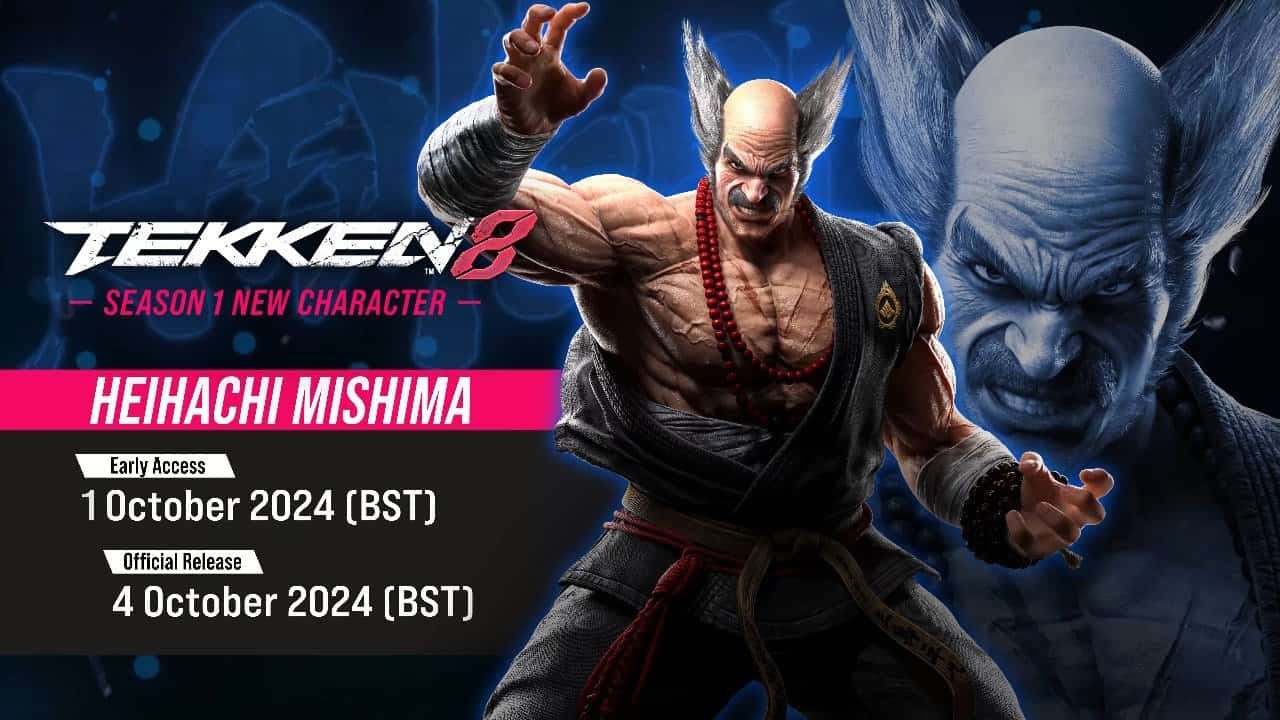
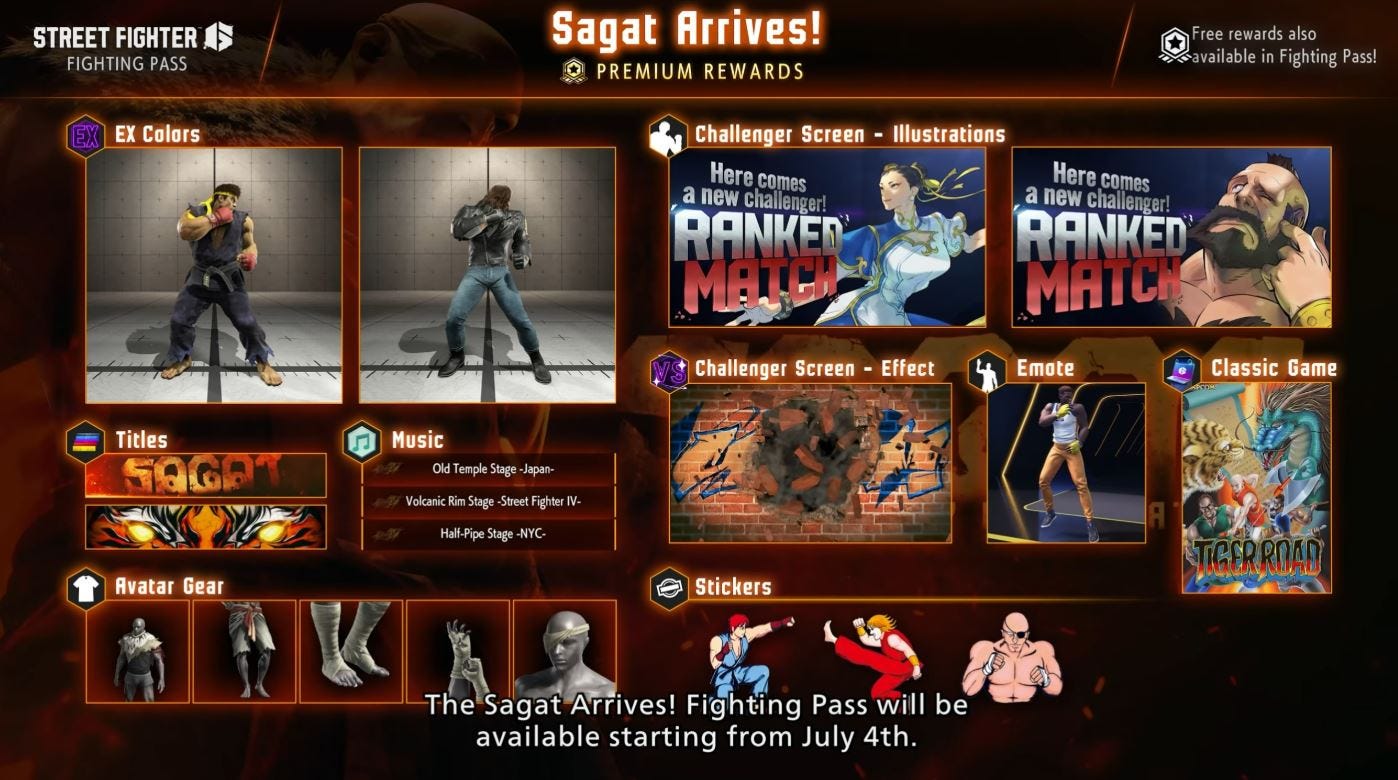
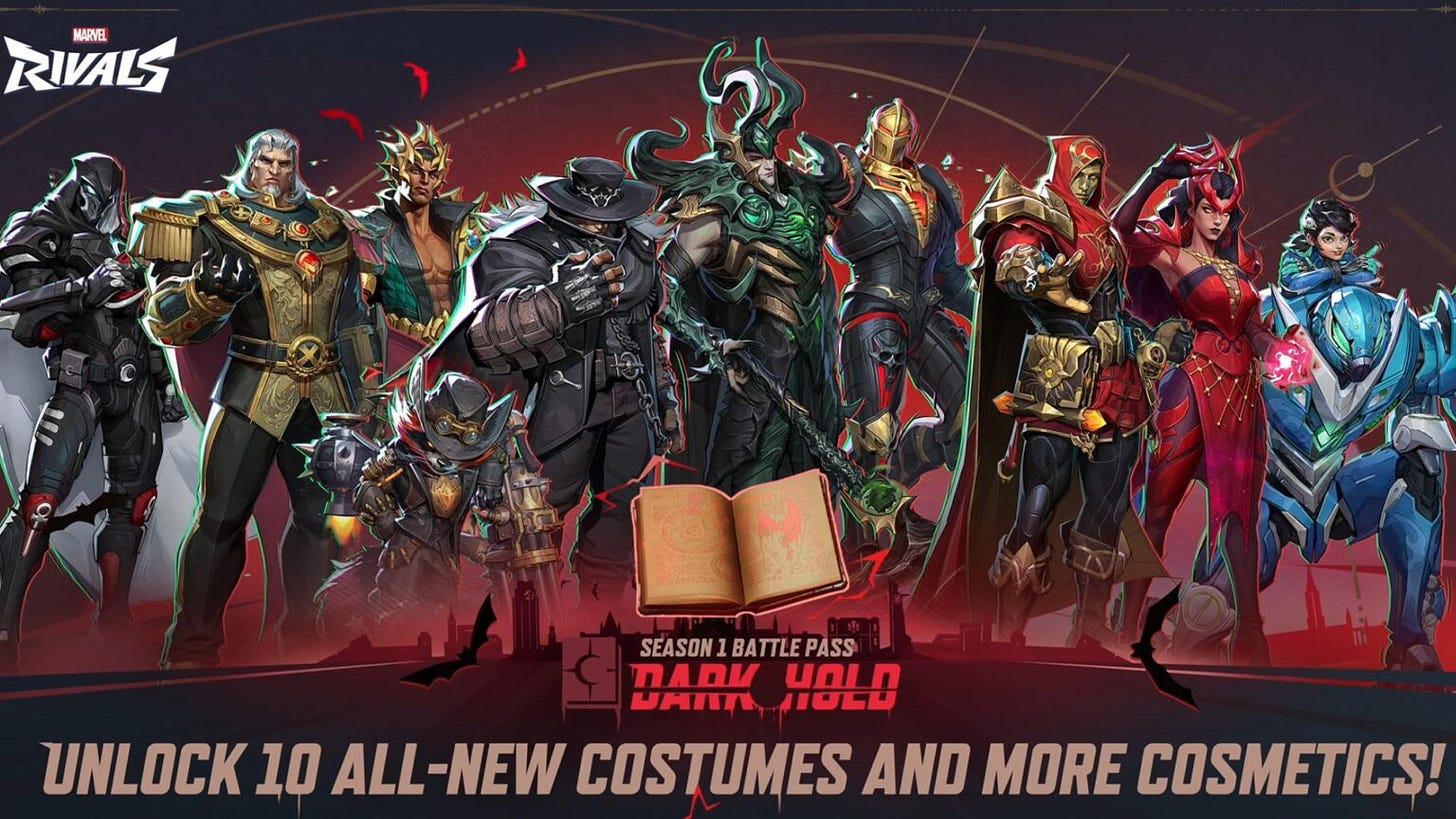
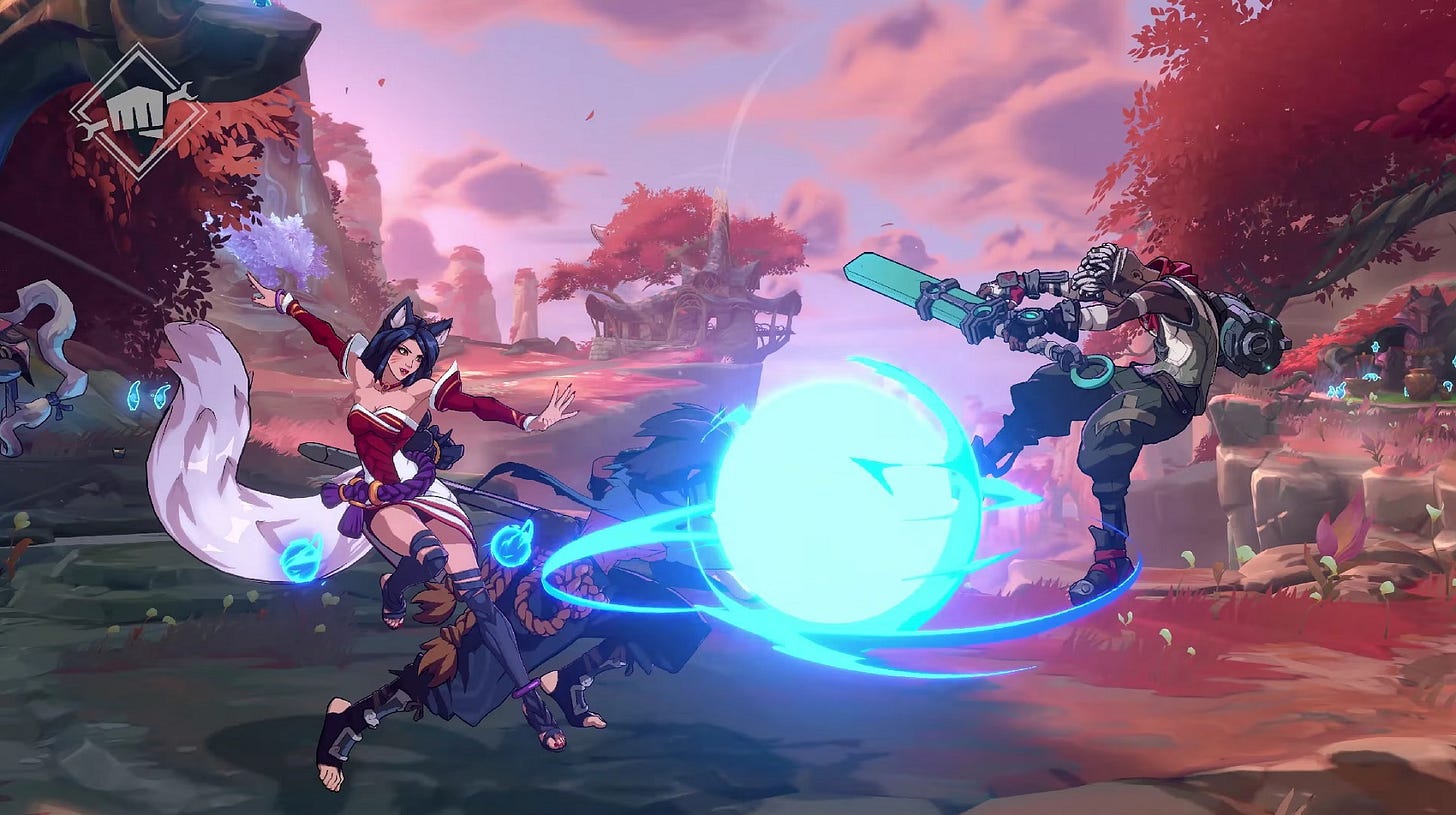
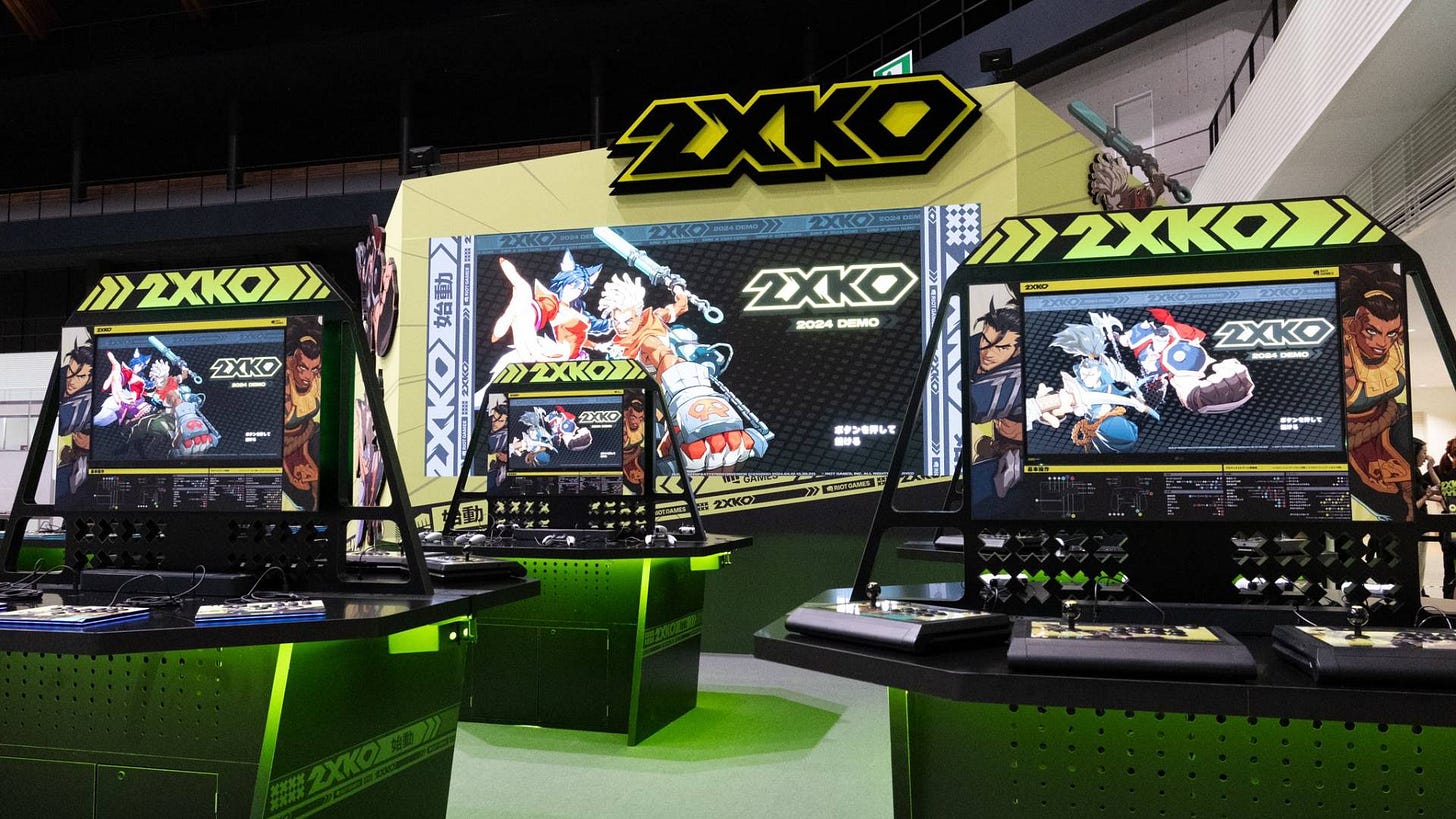
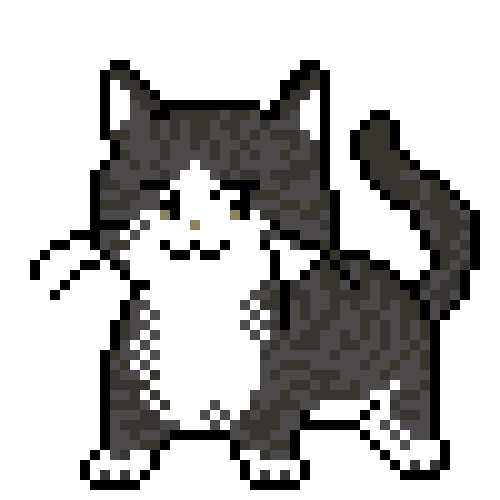

As an 80s baby, I still can't quite wrap my mind around the idea of microtransactions, battle passes, etc. It seems... and I don't know how else to say this but... profane. Like, you know, the opposite of sacred.
I remember back in the day when I plugged my PlayStation (3?) into the WORLD WIDE WEB for the first time and played with people across the country. It was amazing! However, I also remember the first time I was blocked from certain content, on a game I already OWNED, because I didn't have PlayStation Plus. I remember, rather vividly, looking at my friend Kyle with sadness- both of us knowing that the world had changed forever.
It's been interesting watching the development of the games-industry over the decades since I first started playing. At some point a couple years ago, I noticed that I've become a predominantly-PC gamer who mostly plays indie titles. Maybe if it weren't for some of the trends that you talk about in this article, I would've got the newest generation of console, remained a console gamer, and kept up with the newest games.
Either way, though, cheers to another article! Keep 'em comin'!
As someone who isn’t a fighting game player, I never gave it much thought on how genuinely messed up it is for them to try to sway you into paying WAY too much money for characters who were free to play back in the day!! This was a very fun read on a genre that I myself do not play!! It’s very eye opening to see the twisted tactics of other genres brought to light!! Also I loved the swear jar joke lol